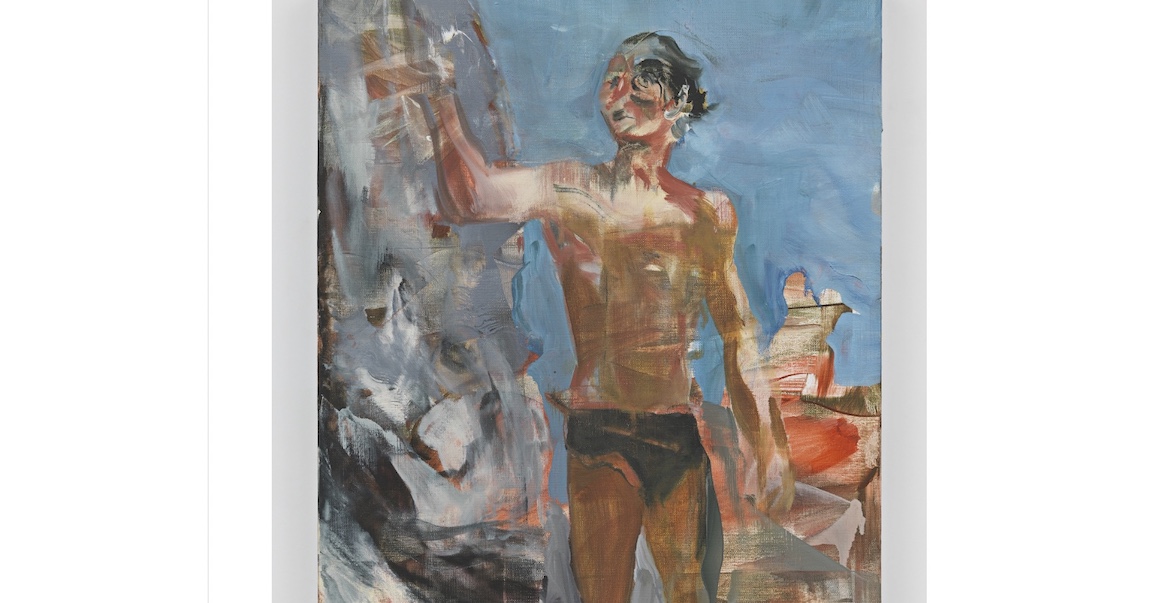It perhaps comes as no surprise that, after having realised in recent years some of the largest works of her career – including the epic Triumph of Death, 2019, which was first exhibited at Blenheim Palace two years ago and has been on view for most of 2022 at the Capodimonte Museum in Naples – Cecily Brown would have felt compelled to return yet again to her beloved smaller (and smallest) paintings.
Brown feels at ease with both scales – the looser, gestural, hyperactive physicality of the former, or the quieter, contained focus of the latter – and consistently goes back and forth between the monumental and the intimate.
Because the grands formats are possibly where you lose your breath; small paintings are probably where you lose your mind. For Brown, ‘you can see things more clearly when they are small’, or as Altoon Sultan wrote when reviewing her 2015 exhibition of small paintings, The English Garden, at Maccarone in NYC: ‘it [is] a lesson to me in slowing down, looking carefully, and being open to new work. […] Each painting contains a particular quality of light and air, and most refer to a landscape space, one that asks us to make our way through dense paint to the spaces behind.’
Their effects are no less virtuosic, but their demands are deceptively effortless – even though Brown will mostly work on them seated and will have to move around the paintings much less, they are not easier to make than a large one. In conversation with Allie Biswas, Brown reminds us that ‘It is a quieter process, definitely. And, this is a cliché, but it is a lot harder to make a small painting than a big one.’ Minute is often much more.
Some of the most memorable and iconic paintings in art history are indeed tiny: La mort de Casagemas, 1901, by Pablo Picasso, is merely 30cm and yet eclipses the next 70 years of his career in poignancy and precision. Le Talisman, 1888, by Paul Sérusier, contains, on a wood panel barely the size of a biscuit tin, a lesson in Modernism (as dictated by Paul Gauguin) that would never be transcended. Such is the scale of Eugène Boudin’s timeless beachscapes or Johannes Vermeer’s hypnotic vignettes.
Brown’s small(er) studio pictures from the studio, of the studio even, make her full repertoire. This is what happens (and remains) behind closed doors. The works can hang on her studio walls for years, as inspiration, as aides-memoire or just old friends. Always in the corner of her eyes, sometimes reflecting from a judiciously or randomly placed mirror, they are neither studies nor afterthoughts, but forever present.
Brown’s entire gamut and palette are on display: her older small paintings are like old tunes echoing and supporting the new album, as the majority of the pictures in the show were realised in the last two years. There are landscapes, interiors, hunting and battles scenes, swings and bowers, Baroque mélées and Rococo fantasies, Shipwrecks and Assemblies – a palimpsest of art historical references which becomes Brown’s own iconography. It is as if the whole of French painting history was playing in front of our eyes: Poussin, Watteau, Fragonard, David, Delacroix, Manet, Boudin, Degas and Bonnard… The latter is a particular favourite of Brown’s, in the ways he treats his female models with such empathy.
Edgar Degas himself acquainted this as almost looking ‘through a keyhole’ – coining the term ‘keyhole views’ – as if, without any sense of misplaced voyeurism or male-gaze control, the models and subjects were seen through the modesty, ease and naturalness of their alcove or bathroom. This re-emerges in a series of works, central to Brown’s exhibition. Following a visit to the major Walter Sickert retrospective at the Tate Britain this year, Brown depicts a reclining female nude on a bed as an homage to a suite of faux-louche paintings Sickert realised in Paris in the summer of 1906, themselves very much reminiscent of Degas and Bonnard.
Through these iterations and transformations, the same respectful (and gentle) act of looking, or as Brown-the-female-artist puts it, a painting in which you are the model’, traverses time and space and perhaps becomes the central allegory of the show
| Duration | 11 October 2022 - 17 December 2022 |
| Times | Tuesday to Friday 11am-6pm Saturday 12pm-6pm |
| Cost | free |
| Venue | Thomas Dane Gallery |
| Address | 3 & 11 Duke Street St James's, London, SW1Y 6BN |
| Contact | / info@thomasdane.com / www.thomasdane.com |

